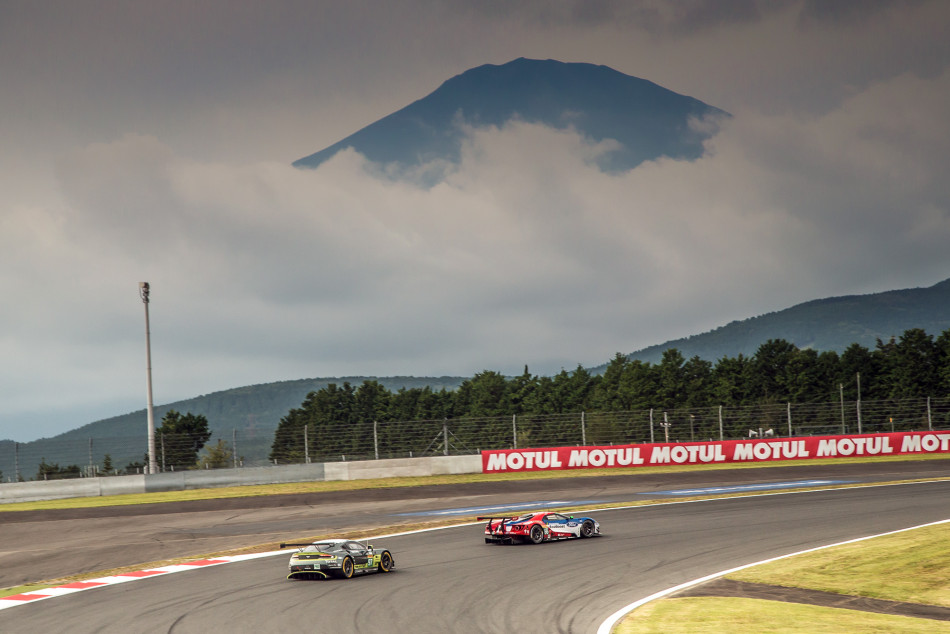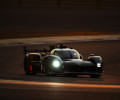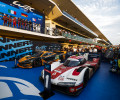This page contains archived information and may not display perfectly
WEC - 6 Hours of Fuji – Facts and Figures
05.10.17
WEC - 2017 6 hours of Fuji

On Sunday 15 October the sixth edition of the 6 Hours of Fuji will receive the green flag to begin round 7 of the 2017 FIA World Endurance Championship.
Here are some facts and figures about the WEC in Japan, Fuji Speedway and Mount Fuji, Japan’s holy mountain that dominates the skyline of the 4.5km circuit.
- Toyota won the first three races at the Japanese manufacturer’s home event between 2012 and 2014 and won again in 2016. The only success for Porsche in Japan was in 2015, when the German manufacturer took a 1-2 finish on their way to the 2015 world titles.
- Roman Rusinov and G-Drive Racing won the LMP2 class in 2014, 2015 and 2016.
- Japanese drivers have been successful in Fuji with Kazuki Nakajimi winning with Toyota in 2012 and 2013, Kamui Kobayashi won with Toyota in 2016 and Shinji Nakano won the LMP2 class with Delta-ADR in 2012.
- Julien Canal is the only driver to have won in Japan in two different classes. He took victory in 2012 in LMGTE Am in the no50 Larbre Competition Corvette and won in LMP2 in the no26 G-Drive Racing Ligier in 2014 and 2015.
- All four GTE manufactuers have been successful in Japan. Ferrari currently has two wins in LMGTE Pro in 2014 and 2015 with Porsche winning in 2012, Aston Martin in 2013 and Ford in 2016.
- Aston Martin has won in the LMGTE Am class three times in Fuji – 2013, 2014 and 2016. Larbre Competition took the top step of the podium in 2012 for Chevrolet and Patrick Dempsey, Patrick Long and Marco Seefried won in the Dempsey-Proton Racing Porsche in 2015.
- The current WEC lap record was set by Loïc Duval in the no8 Audi R18 during the 2016 race with 1m24.645
- The LMP2 lap record was broken in 2016 by Alex Lynn in the Manor Oreca-Nissan with a 1m32.948, beating the previous best time that was set in 2012 by Nelson Panciatici in the Signatech Nissan Oreca 03 with a lap of 1m33.453.
- Harry Tincknell set a new LMGTE Pro lap record in 2016 setting a 1m38.575 in the Ford GT.
- Pedro Lamy set a new LMGTE Am lap record of 1m40.052 in 2016.
- The fastest lap recorded by an LMP1 car was set in 2015 during qualifying by Mark Webber. The Australian set a 1m22.639 lap (198.8kph average speed), 3.596 seconds quicker than the previous qualifying record of 1m26.235 (190.5kph) set by André Lotterer in 2013 in the Audi R18 e-tron quattro. This was set during qualifying and so can’t be counted as the official LMP1 lap record.
- The fastest speed recorded at Fuji Speedway by a WEC competitor was set by Mathéo Tuscher in the LMP1 class Rebellion R-One-AER in 2016. The Swiss driver recorded a top speed of 321.4 kph / 199.7 mph.
- Fuji Speedway was established in 1963 and originally designed as a 4km banked superspeedway but only one of the banked turns was ever constructed. The track was converted to a road course circuit and opened in 1965. The 30 degree ‘Daiichi’ banking was used as part of the circuit but a number of fatal accidents caused it to be abandoned with a change of track configuration.
- The current 4.563km / 2.835 mile layout, established in 2005, is the 5th configuration of the circuit since Fuji Speedway opened in 1965.
- At 1.5km / 0.93 miles the start finish straights is one of the longest in motorsport.
- Fuji Speedway brought the first Formula One race to Japan at the end of the 1976 season. The race had a dramatic World Championship battle between James Hunt and Niki Lauda, and in torrential rain, Hunt earned enough points to win the title. This battle between Lauda and Hunt was immortalised in the 2013 film ‘Rush’.
- The 1000km of Fuji was first held in 1967 and ran continuously until 1992, and more recently in 1999 and 2007. In 2012 the World Endurance Championship introduced the 6 Hours of Fuji, the 2014 race winners recording a distance of 1076km at the end of the 6 Hours.
- The World Sportscar Championship was held at Fuji Speedway between 1982 and 1988, with Stefan Bellof setting the fastest ever recorded lap at Fuji in a Porsche 956 in 1983. Bellof’s time of 1m10.02 was set on the old 4.360km / 2.709 mile track.
- Mount Fuji, or Fuji San as the mountain is reverently referred to by the Japanese, provides one of the most dramatic backdrops to any race circuit in the world. Mount Fuji is one of three holy mountains in Japan, Mount Tate and Mount Haku being the others.
- Mount Fuji is 3,776.24 m / 12,389 ft high and is actually an active volcano which last erupted in 1707/08.
- Mount Fuji was added to the World Heritage List as a Cultural Site by UNESCO on June 22, 2013.

 Facebook
Facebook Twitter
Twitter






